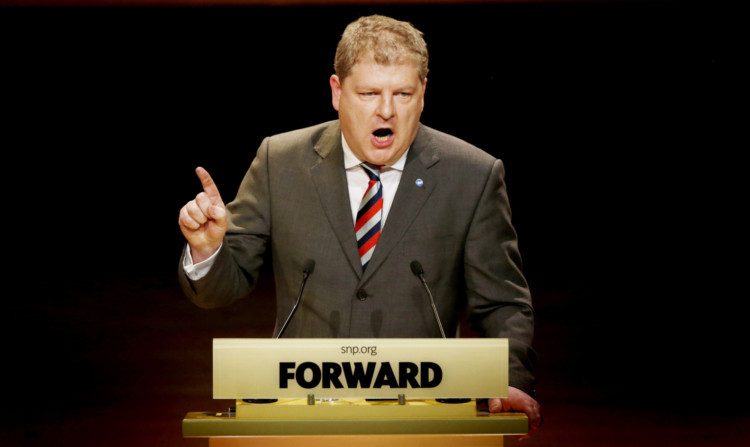
Members of a newly formed Scottish Defence Force would be allowed to start their own ‘trade union’ to have a greater say in the running of an independent Scotland’s military.
The move to create official representation for troops which is commonplace across Europe would be part of an overhaul of conditions for armed forces personnel in Scotland, including a ban on compulsory redundancies and a review of pay rates.
Anyone joining the proposed Scottish Defence Force would also have the promise of a “full ranks career structure” and better troop rotation.
The proposal for “enhanced terms and conditions for military personnel” will be discussed at next month’s SNP conference.
The Nationalist charm offensive on frontline troops is an acknowledgement that any newly-formed Scots force would face stiff competition for recruits from what would remain of the UK in the event of a Yes vote.
A string of military experts, including General Sir Mike Jackson, the former head of the British Army, have claimed many soldiers would refuse to serve in the proposed Scottish Defence Force.
They argue that many will stick with British forces in order to take part in more adventurous missions.
However, SNP defence spokesman Angus Robertson is confident an independent Scotland would not struggle to recruit the estimated 15,000 troops needed for its fledgling armed forces.
He said: “With a Yes vote military personnel and their families can have a much better deal than the current MOD set-up.
“Best practice in other countries proves there lots that can be done to improve the working life of men and women in our Armed Forces.
“If Scotland has the power to make defence decisions I want an SNP government to prioritise improved conditions for military personnel. Terms and conditions need to be reviewed and this should include a safeguard on military contracts so people are not kicked out of the forces as is presently the case.
“Personnel should also be able serve a full career in Scotland. At present too many talented people sign-up and literally never serve in Scotland which is a ridiculous state of affairs, undermining family life and links to home communities. Of course the prospect of operations and training in different countries will be a key part of the Scottish military experience, but a more settled basing solution in Scotland will be a huge improvement.”
UK troops are barred from joining trade unions but legally recognised military representative groups already exist in countries such as Germany, Sweden and Denmark. Robertson continued: “Personnel should also be properly represented within the military and with defence decision makers.”
A resolution to “significantly improve the careers of military personnel in Scotland” will be put forward at next month’s SNP conference. The proposal follow commitments by the SNP to increase troop numbers in Scotland from the current 11,000 to 15,000, safeguard military bases and reintroduce historic regimental identities in Scottish Defence Forces. But terms and conditions will only be part of the story for any Scots soldier or sailor considering switching sides in the event of a
Yes vote.
An independent Scotland’s standing on the world military scene will also be critical.
Robertson has said an independent Scotland would have an annual defence budget of £2.5 billion but his party has not so far been forthcoming with the start-up costs for the bases and military hardware that would be required.
Dr Michael Williams, from the University of London, has claimed an independent Scotland would be among Europe’s smallest defence spenders and defence secretary Philip Hammond said the SNP’s plan is so “incoherent” they could afford only half a destroyer to help protect the country’s waters.
It is perhaps kit rather than conditions which might be the bigger battle facing the SNP when it comes to winning over the troops.

Enjoy the convenience of having The Sunday Post delivered as a digital ePaper straight to your smartphone, tablet or computer.
Subscribe for only £5.49 a month and enjoy all the benefits of the printed paper as a digital replica.
Subscribe